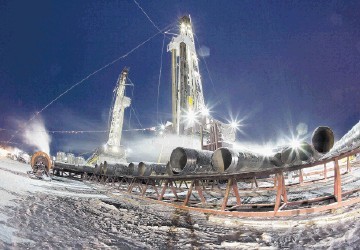
US crude oil imports have been declining since 2005, although crude oil imports from Canada have been increasing.
As of August, Canada provided 45% of all crude oil imports to the United States, almost three times as much as all Persian Gulf countries combined.
Information collated by the US Energy Information Administration reveals the United States has been the primary destination for Canada’s crude oil exports since the early 2000s.
Based on data from the first half of this year from Canada’s National Energy Board, 99% of Canada’s crude oil exports were sent to the US.
More than half of these volumes went to petroleum refineries in the Midwest.
Data from the US Department of Commerce specify the nearest port of entry but not the mode of transit used to import this crude oil.
Most of these imports are believed to have come through pipeline systems such as Enbridge Mainline, Kinder Morgan Trans Mountain, Spectra Express, and TransCanada Keystone. About 3% was transported by rail.
The EIA states that within the United States, the regional destination of crude oil sent by rail is different from other modes of shipping crude oil. While about 65% of Canadian crude oil imports by pipeline and other modes not including rail are shipped to refineries in the US Midwest (PADD 2), imports from Canada by rail go primarily to Gulf Coast and East Coast refineries.
The United States first imported crude oil by rail from Canada in October 2010, with the first full year of shipments by rail totaling 2,000 barrels per day in 2011. Rail shipments continued to increase through 2014, when they reached 140,000 b/d, but they have decreased in 2015, the EIA stated.
Because transporting crude oil by rail is generally more expensive than transporting it by pipeline, rail is used only when appropriate cost differentials exist or where pipeline infrastructure is insufficient.
